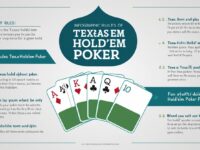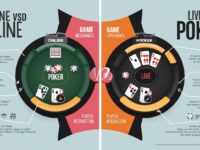In the intricate game of poker, understanding the concept of position is as crucial as grasping the rules themselves. Whether you’re a novice or a seasoned player, recognizing the importance of your seating arrangement can significantly impact your strategy and ultimately, your success at the table. Let’s delve into the fundamental aspects of poker position and how it can dramatically alter the landscape of your poker game.
Grasping the Basics of Poker Position Strategy
Poker position refers to where a player is seated in relation to the dealer, and it can dictate the flow of the game. The three primary positions in poker are early position (EP), middle position (MP), and late position (LP), each carrying its own strategic advantages and challenges. Players seated in early positions act first, which can be a disadvantage due to the lack of information about opponents’ actions. Conversely, players in late positions act last, allowing them to make more informed decisions based on the actions of those before them.
Late position, particularly the button (dealer position), is often considered the most advantageous because it provides the player the opportunity to observe the actions of all other players before making a decision. This observational advantage allows for strategic plays such as bluffing with more confidence or extracting maximum value from strong hands. Understanding these dynamics is essential for any player looking to improve their game, as it can lead to more profitable decision-making and an increase in overall win rates.
The middle position offers a balance between the early and late positions, providing the player with some information from earlier players’ actions while still having several players to act after them. This position requires a mix of caution and aggression, as it often involves playing hands that can capitalize on the weaknesses of early players while protecting against the strength of those yet to act. Mastering the nuances of each position can transform a player’s approach, making them more adaptable and strategic at the table.
Why Position Can Make or Break Your Poker Game
The importance of position in poker cannot be overstated; it can be the determining factor between a winning and losing session. Players in a strong position can leverage their informational advantage to control the pot size and pressure opponents into making mistakes. This control is especially crucial in no-limit games, where the stakes and potential losses can escalate rapidly. By playing more hands in late position, players increase their chances of capitalizing on opponents’ errors and gaining a significant edge.
Conversely, neglecting the importance of position can lead to costly errors. Players in early positions who open the betting with marginal hands face the risk of being raised or re-raised by those in later positions, who have the benefit of more information. This can quickly lead to being ousted from a hand or forced to commit more chips than intended. Understanding when to be aggressive and when to exercise restraint based on position is key to managing risk and maximizing returns.
Ultimately, recognizing the power of position allows players to adopt a more flexible and responsive strategy. By adjusting their play style according to their position, players can exploit weaknesses in others while protecting their own vulnerabilities. This adaptability can lead to more consistent performance and a stronger overall game. Acknowledging the impact of position is not merely a recommendation but a necessity for anyone serious about improving their poker capabilities.
Mastering the concept of poker position is a journey that can significantly enhance a player’s strategic arsenal. By understanding the subtleties of where you are seated and leveraging that knowledge into actionable strategy, you can gain a decisive edge over your opponents. Whether playing for fun or in serious competition, the ability to account for position will inevitably lead to smarter, more informed play, and ultimately, more success at the poker table.



















0 Comments